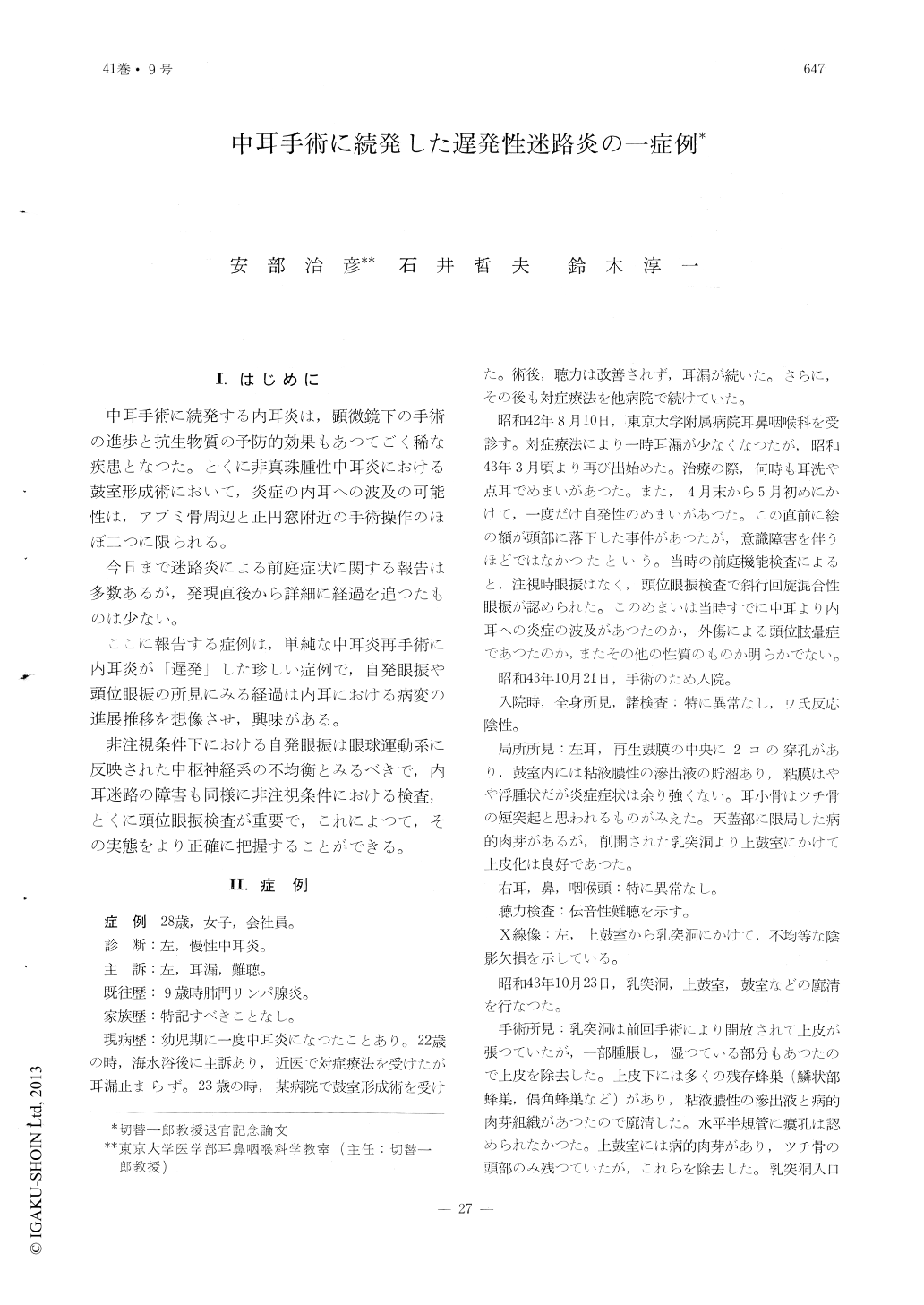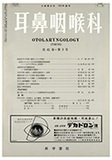Japanese
English
- 有料閲覧
- Abstract 文献概要
- 1ページ目 Look Inside
I.はじめに
中耳手術に続発する内耳炎は,顕微鏡下の手術の進歩と抗生物質の予防的効果もあつてごく稀な疾患となつた。とくに非真珠腫性中耳炎における鼓室形成術において,炎症の内耳への波及の可能性は,アブミ骨周辺と正円窓附近の手術操作のほぼ二つに限られる。
今日まで迷路炎による前庭症状に関する報告は多数あるが,発現直後から詳細に経過を追つたものは少ない。
ここに報告する症例は,単純な中耳炎再手術に内耳炎が「遅発」した珍しい症例で,自発眼振や頭位眼振の所見にみる経過は内耳における病変の進展推移を想像させ,興味がある。
非注視条件下における自発眼振は眼球運動系に反映された中枢神経系の不均衡とみるべきで,内耳迷路の障害も同様に非注視条件における検査,とくに頭位眼振検査が重要で,これによつて,その実態をより正確に把握することができる。
The authors reported a 28 year-old woman who was supposed to have developed serous labyrinthitis 2 weeks after the tympanoplastic surgery. She complained of vertigo, nausea and vomitting at the onset, and 6 weeks following the surgery total hearing loss was verified and at that time no caloric responses to ice-cold water were observed. Examinations of gaze, positional and positioning nystagmus were performed throughout the entire course. Rotating positionalnystagmus was seen in the beginning, and direction-changing rotating positional nystagmus was developed, which was followed by direction-fixed positional nystagmus. Afterwards the authors observed horizontal-rotating nystagmus directing away from the affected side. No spontaneous nystagmus was seen for 6 weeks postsurgically. The above observations gave the authors the impression that the inflammation initiated around the oval window, then spread to the otolithic organs and finally to the entire labyrinth. The authors emphasized the importance of the examination of positional nystagmus in diagnosing the early stage of labyrinthitis.

Copyright © 1969, Igaku-Shoin Ltd. All rights reserved.


